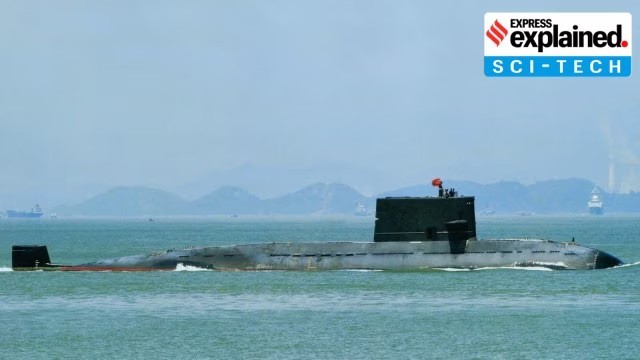
Hangor class submarine

01.05.2024
Hangor class submarine
|
For Prelims: About the Hangor class submarine(Basic characteristics, Comparison with India’s Kalavari class, Difference, Similarities) |
Why in the news?
The first Hangor class submarine, built by China for Pakistan, was launched recently at a Wuhan shipyard.
About the Hangor class submarine
- The Hangor-class is an export variant of the Chinese Type 039A Yuan class.
- This was the first of eight submarines of this class that the Pakistan Navy is set to induct into its fleet by 2028.
Basic characteristics of Hangor class submarine:
- It is a diesel-electric attack submarine, named after the now decommissioned PNS Hangor, which famously sank Indian frigate INS Khukri during the 1971 war.
- The Hangor-class boasts four diesel engines.
- It is also equipped with an air independent propulsion (AIP) system, which significantly increases the submarines’ endurance underwater.
- It has six 21 inch torpedo tubes, and capabilities to launch anti-ship missiles, as well as the Babur-3 subsonic cruise missile, which has a range of 450 km.
- “Diesel-electric” refers to the mode of propulsion where diesel engines power the submarine when surfaced or snorkeling (as they need air to operate), while a battery, charged by the diesel engine, allows the vessel to operate while submerged.
- Conventional diesel-electric submarines need to surface to recharge their batteries after a few days (2-5, depending on the battery used), making them detectable to enemy radar and exhaust fumes sensors.
- An air independent propulsion (AIP) system can increase submarines’ underwater endurance manifold (upwards of 15-20 days). The Indian Navy is currently in the process of installing an indigenously developed AIP system to its Kalvari class submarines.
- Attack submarines are specifically designed for sinking other submarines or surface vessels using torpedoes, or in modern times, cruise missiles. The Hangor-class has six 21 inch torpedo tubes, and capabilities to launch anti-ship missiles, as well as the Babur-3 subsonic cruise missile, which has a range of 450 km.
Comparison with India’s Kalavari class
- Pakistan’s Hangor class is the direct counterpart of India’s Kalavari class of submarines, based on the French Scorpene-class. India currently operates six Kalvari class submarines, with three more set to be inducted into service by the early 2030s.
Difference:
- In terms of size, the Hangor class is significantly bigger than the Kalavari class, which displaces 1,775 tons and is 67.5 m long. The Hangor class, on the other hand, has a displacement of 2,800 tons, is 76 m in length, 8.4 m in width (at its widest point), and has a draught (depth of the vessel below the waterline) of 6.2 m when on the surface.
- While Pakistani submarine crews might have a bit more comfort in shallow waters, it's actually a significant problem because the Kalvari class submarines are much better at maneuvering in those kinds of waters.’
- In terms of armament, the Kalavari class carries six 21 inch, German-made torpedoes, and missile systems such as French Exocet anti-ship missiles, and MICA anti-air missiles. This is likely superior, and more battle tested than Hangor’s armament.
- The models India currently operates do not come with built-in AIP. This means that in terms of underwater endurance, the Hangor class potentially has an edge on the Kalavari class.This matters because submarines’ USP is their ability to be stealthy, much of which comes from their capability of remaining underwater for extended periods of time.
Similarities:
- The Pakistani submarine has a reported top speed of 20 knots (37 kmph), same as its Indian counterpart.
- The Kalavari class, like the Hangor class, runs on diesel-electric propulsion.
- Both submarines do not have vertical launch systems (like the ones in India’s nuclear Arihant class), which would allow it to carry bigger cruise missiles like the Brahmos-NG.
- Both submarine classes carry state of the art sensor suites, although details of Hangor’s capabilities in this regard are not out in public.
Source:Indian Express